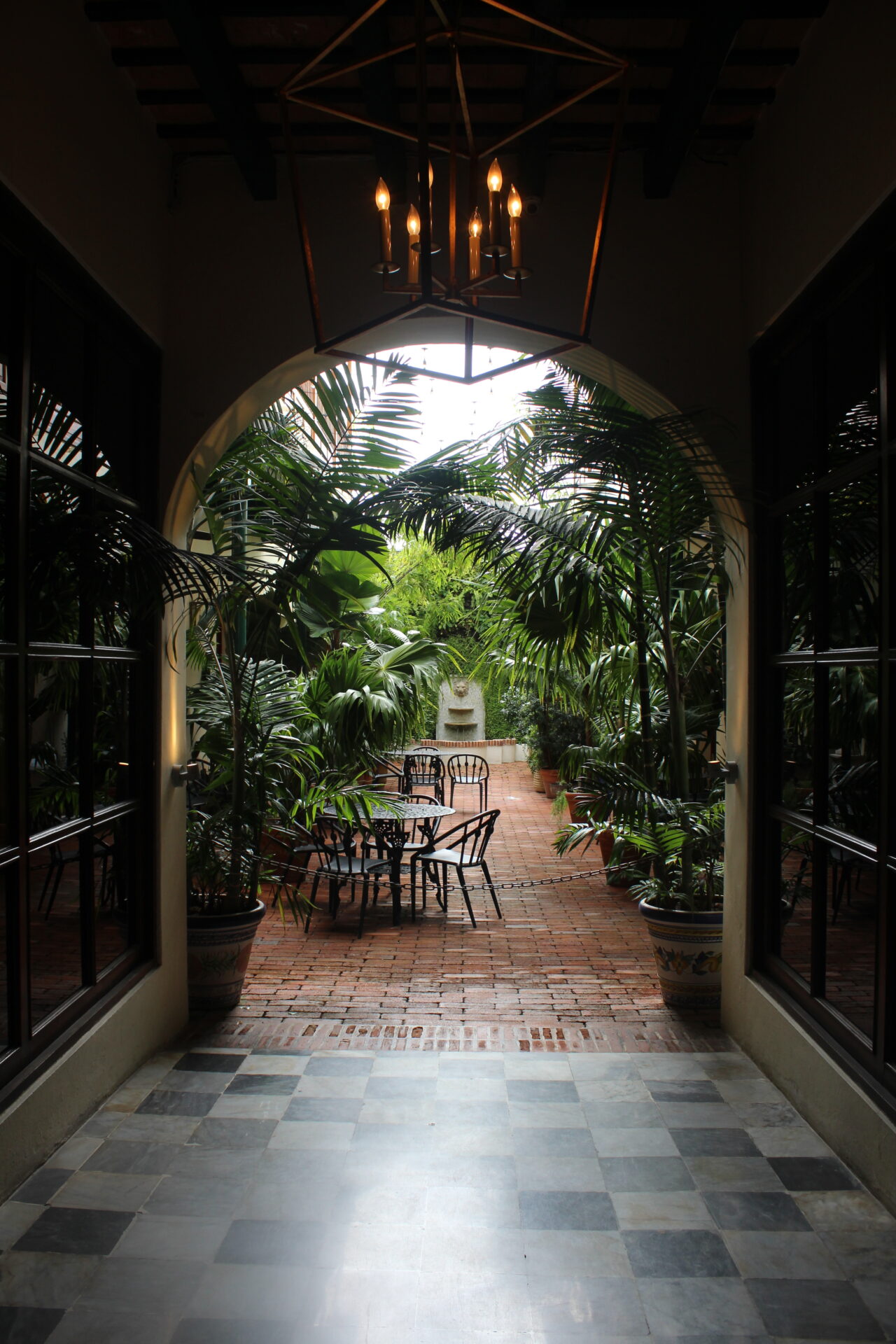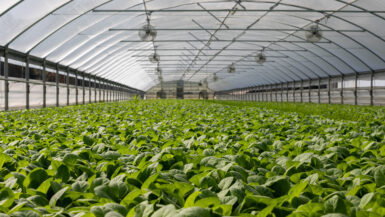In today’s fast-paced corporate world, creating a work environment that promotes productivity, creativity, and well-being is essential. One innovative way to achieve this is by incorporating indoor vertical gardens into office spaces.
This article delves into indoor vertical gardening and offers many inspiring ideas to transform your workspace into a green oasis. We will discuss the benefits of incorporating greenery in the office, explore various vertical garden systems, and provide practical tips to help you create a thriving and sustainable indoor garden that complements your professional setting. So, fasten your seatbelts as we take you through the fascinating world of indoor vertical gardening for office spaces.
Space-Saving Vertical Garden Designs for Offices
Vertical gardens provide an innovative and aesthetically pleasing solution for incorporating greenery into your office space, especially when space is at a premium. This subsection will explore a variety of space-saving vertical garden designs that can be tailored to your office’s unique needs, style, and layout. From living walls to modular systems, these design ideas will inspire you to create a functional and visually appealing office environment.
Living Walls: A Breath of Fresh Air
Living or green walls are large panels or structures covered with various plants. These walls can be either soil-based or hydroponic, allowing them to be customized to fit any office space. Living walls are a stunning addition to any workspace, providing a natural backdrop that can help reduce stress and improve air quality.
Consider incorporating air-purifying plants into your living wall design for an even more significant impact on your office’s air quality. Check out our Indoor Vertical Garden Tips for Air Purifying Plants guide to learn more about air-purifying plants and their benefits.
Modular Planters: Flexibility and Functionality
Modular planters are a versatile and space-saving option for adding greenery to your office. These systems consist of individual planters that can be easily arranged and rearranged according to your office’s layout and design preferences. This allows you to create custom configurations that can be easily adapted as your office space evolves. From freestanding units to wall-mounted options, modular planters offer endless possibilities for incorporating a vertical garden into your workspace.
Vertical Gardens with Shelving Units
If you want to create a vertical garden without investing in specialized systems or structures, consider using existing shelving units to display potted plants. By arranging plants on shelves visually appealingly, you can create a striking focal point in your office while saving valuable floor space. Be sure to choose plants that thrive in your office’s lighting conditions, and consider adding grow lights if necessary to ensure your garden’s success.
Suspended Gardens: Adding a Touch of Whimsy
For a unique and eye-catching vertical garden design, consider suspended gardens. These gardens feature plants that are hung from the ceiling or other elevated surfaces, creating an enchanting and visually striking display. Suspended gardens can be achieved using hanging planters, macramé hangers, or even repurposed items like ladders or pallets. This approach not only saves valuable floor space but also adds an element of whimsy to your office environment.
Incorporating vertical gardens into your office space can significantly impact your employees’ aesthetics and overall well-being. With these space-saving design ideas, you can transform your workspace into a lush green sanctuary that fosters productivity, creativity, and a sense of connection to nature.
Incorporating Office Branding into Vertical Garden Designs
Creating a cohesive and visually appealing office space involves more than just selecting the right plants and layout for your vertical garden. Integrating your company’s branding into your garden design can help reinforce your brand identity and create a memorable impression on employees, clients, and visitors.
In this subsection, we will explore various ways to incorporate your office branding into your vertical garden designs, from color schemes to logo placement, ensuring that your indoor garden becomes an extension of your brand’s personality.
Color Schemes: A Palette Inspired by Nature
One way to incorporate your company’s branding into your vertical garden design is by selecting plants that reflect your brand’s color scheme. For example, if your company’s logo features shades of blue, consider incorporating plants with blue flowers or foliage, such as delphiniums or blue fescue. Additionally, you can use colored pots or planters that match your brand’s colors to create a cohesive and visually appealing display. This color coordination adds aesthetic appeal and helps reinforce your brand identity within the office space.
Shapes and Patterns: A Reflection of Your Brand’s Identity
Another unique approach to incorporating branding into your vertical garden design is using plants and arrangements that reflect your brand’s logo or other visual elements. For instance, if your logo features geometric shapes, consider arranging plants to mimic those shapes or patterns.
You could also choose plants with distinct leaf shapes or patterns, such as ferns or calatheas, that relate to your brand’s visual identity. You can create a garden design that subtly communicates your brand’s essence by thoughtfully selecting and arranging plants.
Logo Placement: A Statement of Pride
Integrating your company’s logo into your vertical garden design can effectively showcase your brand’s identity. Consider creating a custom planter or trellis that features your logo prominently, or use durable, weatherproof materials to display your logo within the garden itself.
Another option is to commission a living wall design that incorporates your logo using plants and mosses of different colors and textures. This creative approach to logo placement makes a strong statement and constantly reminds you of your company’s values and mission.
Themed Gardens: Connecting Your Brand’s Story with Nature
For a more immersive branding experience, consider designing a themed vertical garden representing your company’s values, products, or services. For example, an eco-friendly company might create a garden with sustainable materials and native plants, while a tech company could incorporate innovative vertical gardening technologies into its design.
By choosing plants, materials, and gardening methods that align with your brand’s story, you can create a meaningful connection between your office space and the company’s mission.
Incorporating office branding into vertical garden designs enhances your workspace’s overall aesthetic appeal and helps reinforce your brand’s identity and values. By considering color schemes, shapes, patterns, logo placement, and themed gardens, you can create a truly unique and memorable indoor garden that reflects your company’s personality and leaves a lasting impression on all who visit your office.
DIY Indoor Vertical Garden Projects for the Office
Creating a beautiful and functional indoor vertical garden doesn’t have to be an expensive or complicated endeavor. With some creativity and some basic materials, you can design and construct your own DIY vertical garden projects that will enhance the aesthetic appeal of your office space and create a healthier environment for you and your colleagues.
This subsection will explore several DIY indoor vertical garden projects perfect for office spaces, from upcycled materials to unconventional planters. Embark on this green journey with us and unleash your inner gardener!
Repurposed Pallet Gardens: Sustainable and Stylish
One budget-friendly and eco-conscious way to create an indoor vertical garden in your office is by repurposing wooden pallets. Start by cleaning and sanding down the pallet, then add landscape fabric to the back and sides.
Fill the pallet with soil and plant your favorite small plants, herbs, or succulents in the slats. Mount the pallet against a wall or securely for a rustic and sustainable vertical garden that adds character to your office space.
Magnetic Planters: A Playful Twist on Vertical Gardening
For a fun and innovative approach to vertical gardening, consider creating magnetic planters that can be easily attached to metal surfaces, such as filing cabinets or shelving units. Attach strong magnets to the back of small, lightweight planters or containers to make magnetic planters and fill them with your favorite indoor plants. This playful project allows you to rearrange your garden as often as you like and can even serve as an interactive team-building activity for your office.
Gutter Gardens: A Unique Approach to Plant Display
Transform discarded rain gutters into an eye-catching and functional indoor vertical garden for your office. Start by cleaning and cutting the gutters to your desired length. Attach end caps and drill small drainage holes in the bottom.
Mount the gutters on the wall using brackets or hooks, and fill them with soil and plants. This unique project helps repurpose waste materials and provides an unexpected and visually appealing display for indoor plants.
Ladder Shelves: A Step Up in Vertical Gardening
Give an old ladder a new lease on life by transforming it into a multi-tiered vertical garden for your office. Clean and paint the ladder to match your office decor, then secure wooden planks or trays to each rung to create plant shelves. Arrange potted plants on each shelf, and consider adding decorative elements such as small sculptures or signs to personalize your garden. This creative project uses existing materials and adds a charming and nostalgic touch to your office space.
Explore these DIY indoor vertical garden projects to create a vibrant, visually appealing garden space without breaking the bank. These projects bring nature’s beauty and benefits into your office and encourage sustainability and resourcefulness. So, roll up your sleeves and create a stunning vertical garden that will inspire and delight your office colleagues while fostering a more productive and harmonious work environment.
Choosing Low-Maintenance Plants for Office Vertical Gardens
Selecting the right plants for your office vertical garden ensures its success and longevity. Choosing low-maintenance plants that can thrive with minimal care and attention is essential in a busy office environment. This subsection will guide you through selecting the perfect low-maintenance plants for your office vertical garden, considering light conditions, watering needs, and growth habits. With the proper plant selection, you can create a lush and thriving garden that adds beauty and serenity to your workspace without burdening your busy schedule.
Consider Light Conditions: Plants for Every Space
One of the most important factors to consider when selecting plants for your office vertical garden is the amount and type of light available in your workspace. Different plants have varying light requirements, so choosing species that will thrive in your office’s specific conditions is essential. Some low-maintenance plants that tolerate low light levels include pothos, snakes, and ZZ plants. Consider adding spider plants, peace lilies, or philodendrons to your vertical garden for offices with bright, indirect light.
Water Wisely: Drought-Tolerant Plants for the Office
In an office setting, it is crucial to choose plants that can tolerate some degree of neglect when watering. Drought-tolerant plants, such as succulents and cacti, are an excellent choice for busy office environments, as they require minimal watering and can withstand periods of forgetfulness. Other low-maintenance plants with low water requirements include the snake plant, ZZ plant, and pothos, which can adapt to various watering schedules and thrive with a bit of neglect.
Manage Growth: Compact Plants for Vertical Gardens
When selecting plants for your office vertical garden, consider their growth habits and size. Compact plants that grow slowly or maintain a small size are ideal for vertical gardens, requiring less pruning and maintenance over time.
Some low-maintenance and compact plant options include ferns like the bird’s nest or the maidenhair fern. These ferns have delicate, intricate foliage that adds texture and visual interest to your garden. Additionally, consider incorporating trailing plants like creeping fig or ivy, which can add a touch of elegance and softness to your vertical garden without becoming overly invasive.
Go Beyond Green: Colorful and Variegated Foliage
Adding plants with colorful or variegated foliage to your office vertical garden can create visual interest and enhance the overall aesthetic appeal of your workspace. Many low-maintenance plants feature striking colors or patterns, such as the croton, which boasts vibrant and multicolored leaves, or the calathea, with its richly patterned foliage. These eye-catching plants add beauty to your vertical garden but also help create a more stimulating and inspiring environment for you and your colleagues.
By carefully considering your office space’s specific needs and conditions, you can select low-maintenance plants that will thrive in your vertical garden with minimal intervention. Considering these factors, from light requirements and watering needs to growth habits and foliage color, will ensure that your office vertical garden remains lush, beautiful, and easy to care for. With the proper plant selection, your indoor vertical garden will become a source of pride and enjoyment, contributing to a more pleasant and productive work atmosphere.
Benefits of Indoor Vertical Gardens in the Workplace
Indoor vertical gardens add visual appeal and a touch of nature to the office environment and offer numerous benefits that can enhance employee well-being, productivity, and overall office dynamics. This subsection will explore the advantages of incorporating indoor vertical gardens into your workplace. We will explore how they can positively impact air quality, employee health, and productivity and even contribute to noise reduction and energy savings.
Improving Air Quality: A Breath of Fresh Air
One of the most significant benefits of an office indoor vertical garden is its ability to improve indoor air quality. Plants act as natural air purifiers, absorbing harmful pollutants and releasing oxygen into the environment. This helps create a healthier workspace and reduces the risk of respiratory issues, allergies, and other health problems associated with poor air quality.
Additionally, some plants, such as spider and snake plants, are particularly effective at removing common indoor pollutants, further enhancing the air-purifying capabilities of your indoor garden.
Enhancing Employee Health and Well-Being: A Natural Approach
The presence of indoor plants and greenery has positively impacted employee health and well-being. Research has found that exposure to plants can help reduce stress and anxiety levels, improve mood, and even alleviate symptoms of depression. By incorporating vertical gardens into your office space, you can create a calming and soothing environment that promotes mental and emotional well-being among your employees, ultimately leading to increased job satisfaction and reduced absenteeism.
Boosting Productivity and Creativity: A Flourishing Environment
Indoor vertical gardens in the office can also contribute to increased productivity and creativity in the workplace. Studies have shown that employees working in environments with natural elements like plants and access to natural light tend to be more focused, creative, and engaged. By introducing vertical gardens into your office space, you can foster a more stimulating and inspiring environment that encourages employees to think outside the box and perform at their best.
Reducing Noise and Enhancing Privacy: A Tranquil Oasis
Another often-overlooked benefit of indoor vertical gardens is their ability to contribute to noise reduction in the workplace. Plants can absorb and diffuse sound, helping to create a quieter and more peaceful environment that is conducive to concentration and productivity.
Moreover, strategically placed vertical gardens can also serve as natural barriers between workstations, providing employees with a sense of privacy and personal space, which can be particularly beneficial in open-plan office layouts.
Energy Savings and Sustainability: A Greener Approach
Indoor vertical gardens can also contribute to energy savings and sustainability in the workplace. By providing natural insulation and shading, plants can help regulate indoor temperatures, reducing the need for heating and air conditioning systems.
This can lead to lower energy consumption and costs and a reduced environmental impact. Furthermore, vertical gardens can help demonstrate your company’s commitment to sustainability and eco-friendly practices, enhancing your brand image and attracting environmentally conscious employees and clients.
The benefits of incorporating indoor vertical gardens into your office space are numerous, ranging from improved air quality and employee well-being to increased productivity and energy savings. By embracing the power of nature and integrating vertical gardens into your workplace, you can create an inviting, healthy, and inspiring environment that supports the success and well-being of your employees and promotes a culture of sustainability and eco-consciousness.







Leave a reply